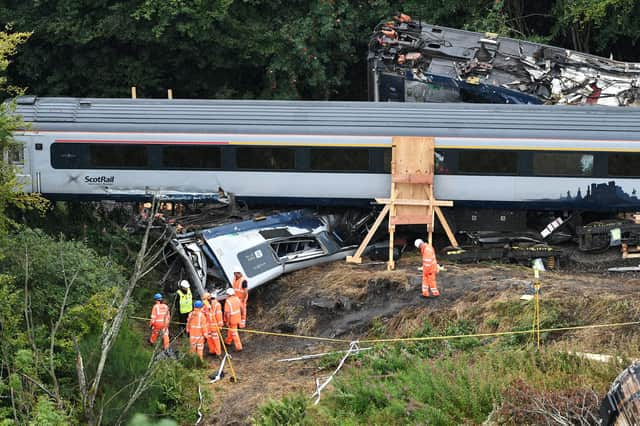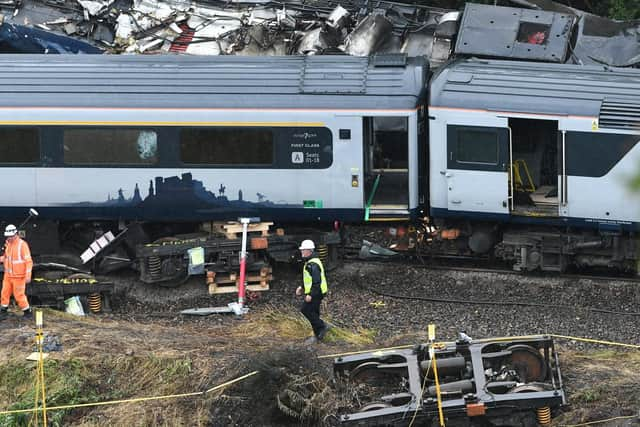Stonehaven rail crash: 'More cautious approach' now being adopted in bad weather


The revelation came as the minister said the line would remain closed “into October”, confirming a Scotsman story last week that it would stay shut for at least another month following the 12 August incident.
Mr Matheson told the Scottish Parliament’s rural economy and connectivity committee the change in Network Rail procedure was included in the track body’s interim report on landslip risks.
Advertisement
Hide AdAdvertisement
Hide AdIt was submitted yesterday to the UK Government, which is responsible for rail safety.


Mr Matheson said: “They [Network Rail] have already changed some of their protocols for decision-making during periods of adverse weather.
"I would probably categorise that as they have implemented changes which would take a more cautious approach when periods of adverse weather take place.
"That has already been issued to staff.”
It is understood the new procedures involve extra checks and monitoring in at-risk areas before and during bad weather, such as to tracks, drainage culverts and bridges over rivers when heavy rain is forecast.
A Network Rail spokesperson said later: “We have introduced additional processes ahead of forecast periods of extreme rainfall to further enhance how we prepare for, and respond to, these weather events.”
Two investigations
Driver Brett McCullough, 45, conductor Donald Dinnie, 58, and passenger Christopher Stuchbury, 62, died when the 6:38am Aberdeen to Glasgow Queen Street train crashed into a landslide across the tracks at Carmont, south of Stonehaven, following heavy rain.
An interim report by the UK Department for Transport’s rail accident investigation branch revealed the train which derailed was travelling at nearly 73mph, just under the 75mph speed limit for that section of the line.
It is understood that train drivers operate under instruction from Network Rail signallers over any changes to speeds.
Advertisement
Hide AdAdvertisement
Hide AdHowever, the procedure changes are believed not to affect such operations, which are already governed by rules, such as trains being slowed down or stopped when tracks are flooded.
A separate investigation has been launched by British Transport Police and Police Scotland.
Mr Matheson said a new access road to the crash site was being built so the wrecked carriages could be removed.
He said it had involved “significant” work, which was now at a “very advanced stage”.
Shuttle
He said: “Once that is complete and once the investigations are complete, Network Rail will be in a position to start the recovery phase.
"My expectation is the line will remain closed for passenger use into October given the scale of the challenge.”
ScotRail introduced a train shuttle service between Aberdeen and Stonehaven on Monday but buses are still replacing trains between Stonehaven and Dundee.
A message from the Editor:
Thank you for reading this story on our website. While I have your attention, I also have an important request to make of you.
With the coronavirus lockdown having a major impact on many of our advertisers - and consequently the revenue we receive - we are more reliant than ever on you taking out a digital subscription.
Subscribe to scotsman.com and enjoy unlimited access to Scottish news and information online and on our app.
Advertisement
Hide AdAdvertisement
Hide AdWith a digital subscription, you can read more than 5 articles, see fewer ads, enjoy faster load times, and get access to exclusive newsletters and content.
Visit https://www.scotsman.com/subscriptions now to sign up.
Our journalism costs money and we rely on advertising, print and digital revenues to help to support them.
By supporting us, we are able to support you in providing trusted, fact-checked content for this website.
Joy Yates
Editorial Director
Comments
Want to join the conversation? Please or to comment on this article.